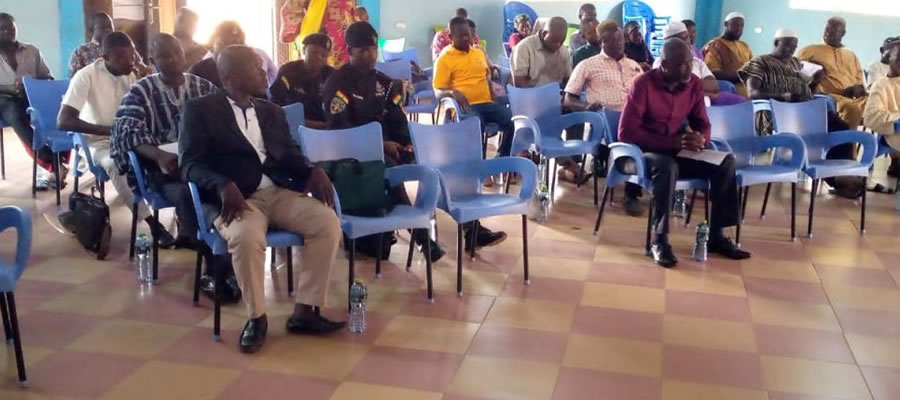

Physical Feature
Location and size
The District is located in the North-Eastern part of Northern Region of Ghana, between latitudes 9o30’ South and 10o30’ North and longitudes 0o East and 45’West. It has a total area of 3,119.3 square kilometres. It shares common boundaries with four districts in the Northern Region: West and East Mamprusi to the North, Savelugu/Nanton to the West and Gushegu (the mother district) to the South and East. Karaga, the district capital is 24km from Gushegu and 94km from Tamale, the regional capital. Figure 1 below shows the map of the district.
Vegetation and Soil
The vegetation is a typical guinea savannah type, characterized by tall grasses interspersed with drought resistant trees such as the Shea and dawadawa. These trees are major economic trees which generate income for the people in the district. The tall grasses are also used in roofing and other art works. The soils are mainly savannah ochrosols, ground water laterites formed over granite and Voltain shales. There are small areas of savannah ochrosols with some lithosoles and brunosols. The laterites are similar in acidity and nutrient level to the ochrosols, but are poorer in physical properties, with substantial amounts of concretionary gravel layers near the top horizons and more suited for road and other constructional works than supporting plant roots systems.
Climate
The climate of the District reflects a typical tropical continental climate experienced in Northern Ghana. The rainy season starts from May, peaking in August and September. The rest of the year is virtually dry. Rainfall amount is between 900 and 1000mm per annum. Temperatures are high throughout the year with the highest of 36ºC and above in March and April. Low temperatures are experienced between November and February (the harmattan period).
Date Created : 12/20/2017 6:15:14 AM








 facebook
facebook
 twitter
twitter
 Youtube
Youtube
 +233 593 831 280
+233 593 831 280 0800 430 430
0800 430 430 GPS: GE-231-4383
GPS: GE-231-4383 info@ghanadistricts.com
info@ghanadistricts.com Box GP1044, Accra, Ghana
Box GP1044, Accra, Ghana